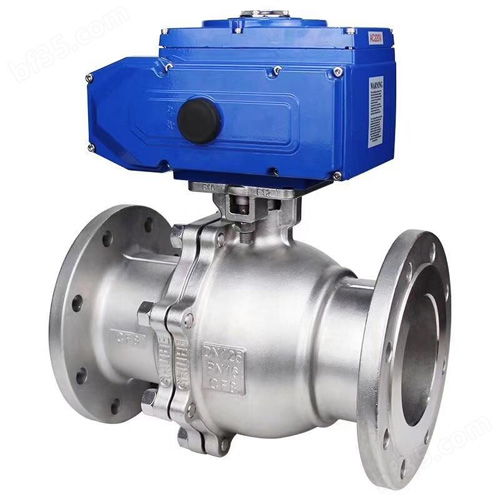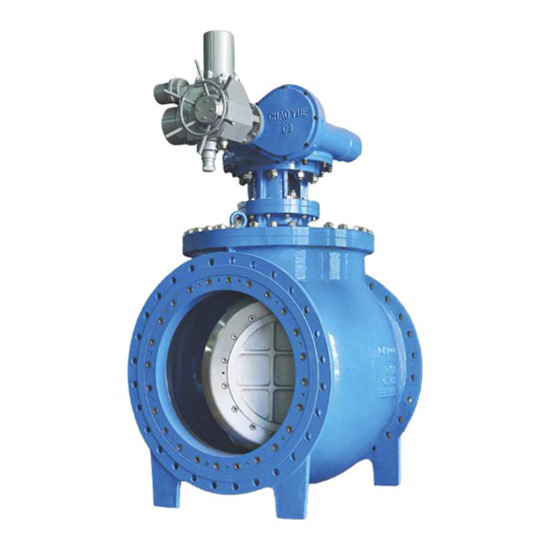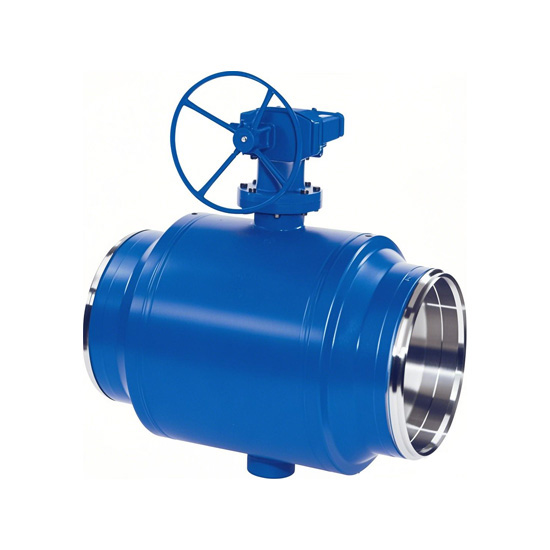1. Valve Overview
Product Definition and Application
The floating ball straight-through soft-seal ball valve is suitable for pipeline systems in petroleum, natural gas, chemical industry, water treatment, heating, food and pharmaceutical industries, and urban gas transmission and distribution. It is mainly used to cut off or connect the medium flow, and can also be used for flow regulation (under certain working conditions). Its features include:
1. Floating ball design: The ball can move slightly under the pressure of the medium, making the valve seat at the outlet end closely fit the ball surface to ensure two-way sealing (especially excellent sealing performance under low-pressure conditions);
2. PTFE (Polytetrafluoroethylene) soft seal: The valve seat is made of PTFE or reinforced PTFE material, which has low friction coefficient, chemical corrosion resistance, high temperature resistance and self-lubrication, extending the service life;
3. Worm gear (or electric/pneumatic device) transmission mechanism: Provides stable and labor-saving operating torque, suitable for large-diameter valves with DN≥100 and scenarios requiring frequent opening and closing.
Explanation of Model Meaning
Q: Ball valve type;
3: Transmission method (worm gear drive); 6: Pneumatic; 9: Electric;
4: Connection type (flange connection);
1: Structure type (floating ball straight-through type);
F: Sealing surface material (PTFE or similar fluoroplastic seal).
2. Main Technical Parameters
Pressure Class
Nominal Pressure (PN): PN10 (1.0 MPa), PN16 (1.6 MPa), PN25 (2.5 MPa), PN40 (4.0 MPa) and higher classes (e.g., Class 150~Class 2500 in accordance with ASME standards);
Strength Test Pressure: 1.5 times the nominal pressure (pressure holding for ≥15 minutes without leakage);
Seal Test Pressure: 1.1 times the nominal pressure (pressure holding for ≥15 minutes without visible leakage).
Applicable Working Condition Range
Operating Temperature:
PTFE valve seat: -29 ℃ ~ +180 ℃ (up to 200 ℃ for short periods);
Modified PTFE or special material valve seat (customized): -46 ℃ ~ +250 ℃ (for high-temperature steam or cryogenic conditions);
Applicable Medium: Water, steam, oil products, natural gas, coal gas, liquefied gas, acid-alkali corrosive liquids (non-strong oxidizing acids) and other clean fluids;
Valve Body/Bonnet Material: Cast steel (WCB), stainless steel (CF8/CF8M/CF3M), low-temperature steel (LCB), etc., to meet different anti-corrosion, pressure-resistant and temperature requirements;
Ball/Valve Stem Material: Stainless steel (304/316/2Cr13) or hardened alloy steel, with wear resistance and corrosion resistance;
Valve Seat Material: PTFE, reinforced PTFE (with glass fiber added, etc.), nylon or fire-resistant structure (PTFE + metal backing).
Structural Dimensions
The flange dimensions (e.g., number of bolt holes, outer diameter) and structural length corresponding to different nominal diameters (DN15~DN250) comply with standards such as GB/T 12221 (Valve Structural Length), GB/T 9113 (Steel Pipe Flanges) and ASME B16.5. The diameter of the ball channel is consistent with the diameter of the connected pipe (full-bore design), resulting in extremely low flow resistance.
3. Core Structure and Working Principle
Composition of Main Components
1. Valve Body and Bonnet: Integral casting or welded structure, connected by a middle flange and fastened with bolts; the sealing surface uses O-rings or flexible graphite gaskets;
2. Floating Ball: Solid ball (partially hollow for weight reduction), with the surface precision-ground and hard chrome-plated or coated; the channel diameter is consistent with the pipe diameter;
3. Valve Seat Assembly: The PTFE valve seat is embedded in the valve body, forming an elastic sealing surface with the ball; the valve seat at the outlet end automatically presses against the ball under medium pressure;
4. Worm Gear Mechanism: Driven by a handwheel to rotate the worm; the worm gear reduces speed and increases torque to drive the valve stem to rotate synchronously;
Valve Stem and Sealing System:
1. The valve stem adopts a flat-head or square tenon structure, closely connected to the ball;
2. Anti-blowout Design: A step or limit structure is provided at the bottom of the valve stem to prevent the valve stem from being blown out under high pressure;
3. Multi-layer Sealing: PTFE or flexible graphite sealing rings are installed in the stuffing box to prevent medium leakage; the top dust cover blocks the intrusion of impurities.
Operating Mechanism
By rotating the handwheel to drive the worm gear mechanism, the valve stem drives the ball to rotate 90° to realize opening and closing:
1. Rotate the handwheel clockwise: The ball rotates until the channel is perpendicular to the pipeline → the valve is closed;
2. Rotate the handwheel counterclockwise: The ball rotates until the channel is coaxial with the pipeline → the valve is opened.
Opening and Closing Status Indication: When the handle (or the mark on the worm gear handwheel) is parallel to the pipeline, it is fully open; when it is perpendicular, it is fully closed.
Sealing and Safety Features
1. Two-way Floating Seal: The medium pressure pushes the ball to fit closely with the downstream valve seat, compensating for wear and maintaining sealing (especially better than fixed ball valves under low pressure);
Fire and Anti-static Design (for gas-specific use):
1. Conductive springs or grounding devices are installed between the ball and the valve stem, and between the valve stem and the valve body to discharge static electricity and prevent sparks from igniting flammable media;
2. In case of fire, after the PTFE valve seat is burned, the metal ball and the metal backing of the valve seat can still form a temporary seal to prevent the spread of fire;
3. Anti-static Operation: Avoid using plastic handles in flammable and explosive environments to ensure operation safety.
4. Standards and Certifications
1. Structural Standards: GB/T 12237 (Steel Ball Valves for Petroleum, Petrochemical and Related Industries), GB/T 12224 (General Requirements for Steel Valves);
2. Test Standards: GB/T 13927 (Pressure Test for General Valves), JB/T 9092 (Reliability of Soft-seal Ball Valves), API 6D (Petroleum and Natural Gas Industry);
3. Connection Standards: GB/T 12221 (Valve Structural Length), GB/T 9113 (Flanges);
4. Fire and Anti-static Standards: API 607 (Fire-safe Design), relevant gas safety specifications;
5. Sanitary Certification: If used in drinking water or food industries, it must comply with sanitary standards such as GB/T 17219 (stainless steel material + non-toxic coating).
Hot Tags: Butterfly valves / Gate Valves / circle seal controls relief valves /




